This post may contain affiliate links. Please read my disclosure policy for more info.
Learn to make deliciously healthy Japanese kanten jelly (agar agar jelly) with fresh fruits. So easy to make this fruit jelly ahead of time!
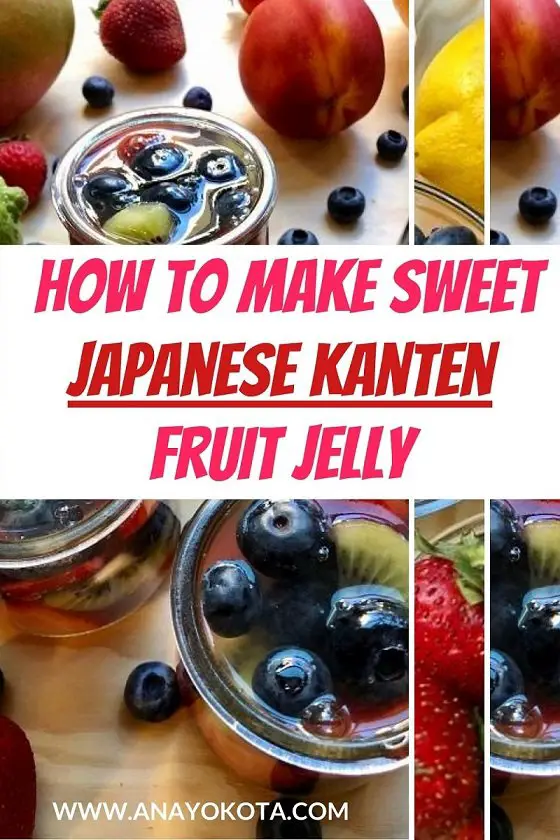
Kanten is a Japanese ingredient commonly known as agar (or agar agar), which is typically made from red algae.
It’s a fascinating and a very healthy plant based ingredient full of fiber and zero calories to help with your digestive system. The most popular way kanten is used is to make Japanese confectionery (e.g.: wagashi).
To go a little deeper, allow me to explain a brief history and the science behind this gelatinous beauty (kanten jelly).

TABLE OF CONTENTS ON JAPANESE KANTEN
- WHAT IS JAPANESE KANTEN AGAR?
- KANTEN POWDER VS GELATIN
- WHERE TO BUY KANTEN POWDER
- HOW TO COOK AGAR AGAR
- FRUIT KANTEN (AGAR AGAR) INGREDIENTS
WHAT IS JAPANESE KANTEN AGAR?

Kanten is the result of hundreds of years of history. Discovered over 335 years ago during the Edo period (1603-1868), kanten was created by accident.
One winter, an innkeeper (Mino Tarozaemon, 美濃屋 太郎左衛門) who was serving Lord Shimazu of the Satsuma had leftover tengusa (tengusa is a specific kind of seaweed belonging to the Rhodophyta family, which is very similar to kanten) and left it outside.
After a few days the tengusa changed in temperature and texture as it froze and dehydrated. Curious to see if it can be revived, the Mino Tarozaemon boiled it back to life and watched it form into the jelly-like substance we know today as kanten.
In short, Industrial kanten is a powder made by immersing ogonori (Gracilaria), a less viscous kind of seaweed than the tengusa used for natural kanten, in sodium hydroxide to improve coagulation. This agar powder has taken over the mainstream status of natural kanten (SOURCE).
KANTEN POWDER VS GELATIN
Agar agar powder is a fantastic substitute for gelatin, which is made from collagen. Gelatin is made from animal collagen producing protein. It has incredible benefits such as aiding in joint health and brain function (SOURCE).
Though gelatin has many great features, kanten agar is a 100% plant based ingredient, which is popular in the vegan community.
Kanten agar must boil in order to dissolve where gelatin can easily dissolve in warm liquid. Kanten will solidify at room temperature; where gelatin will harden in the refrigerator.
Additionally, the texture of kanten also has a firmer texture than that of gelatin, which tends to be slightly creamier.
WHERE TO BUY KANTEN POWDER
Today kenten agar is most commonly found in three different forms:
- Powder (typically packaged in individual 2 gram kanten stick)
- Ito Agar, which is basically a thread like form
- Flakes
Kanten can be found easily in most asian (Japanese) markets and many natural health food stores — not to mention, online.
HOW TO COOK AGAR AGAR
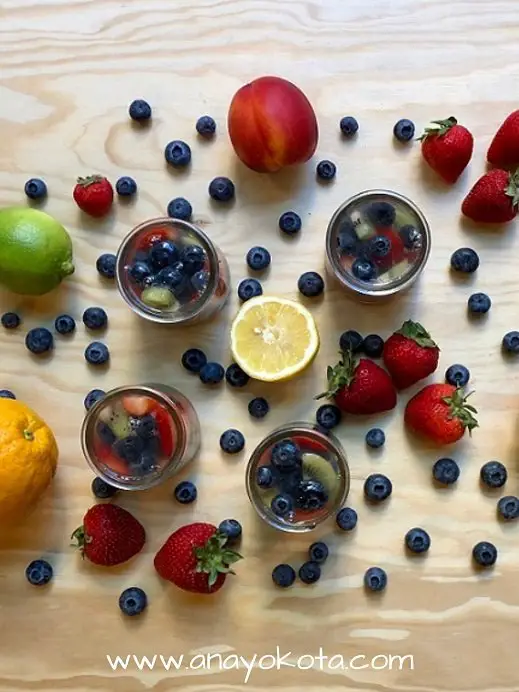
Japanese kanten desserts are very easy agar agar recipes. All you need are three base ingredients (kanten powder, water, and sugar) to make virtually hundreds of different kinds of kanten dessert.
Here is the basic recipe for agar agar jelly:
For every 2 grams of kanten powder:
- 150ml (5oz or ⅔ cup): boiled water (at least 194°F [90°C])
- 150ml (5oz or ⅔ cup): any kind of juice (e.g.: apple juice)
- 30g (1oz or 2 tbsp): granulated sugar
Here is the full recipe for the fruit kanten recipe showed in this post:
FRUIT KANTEN (AGAR AGAR) INGREDIENTS
Serves: 4
Cook time: 5 minutes
- Four jars: 5oz (or ⅔ cup). I repurposed Oui yogurt jars. If you do not have jars, that’s okay! Use any square dish that has a little depth (like an 8 x 8 baking dish).
- 2g (2 tsp): powdered kanten
- 30g (1oz or 2 tbsp): granulated sugar
- 150ml (5oz or ⅔ cup): water
- 150ml (5oz or ⅔ cup): any fruit juice (e.g.: lemonade, apple juice, mango juice, etc…)
- Fresh fruit:
- ½ cup: blueberries
- 2: kiwis roughly chopped
- ½ cup: cut strawberries.
- Equally distribute the fruit in each jar or square dish. Set aside.
- Put water and kanten in a small saucepan. Whisk and bring it to a boil.
- Once the water boils, whisk in the sugar until it fully dissolves and simmer for about 2 minutes.
- Whisk in the juice of your choice. IMPORTANT: warm up the juice for about 30 seconds in the microwave before mixing it into the kanten mixture.
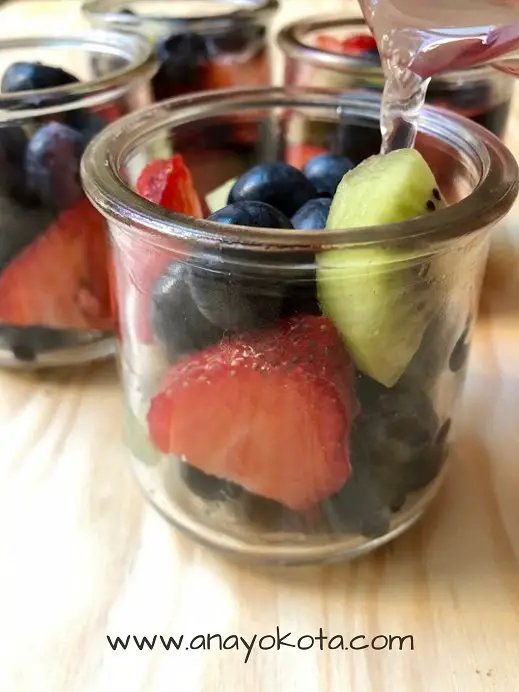
- Equally portion the Japanese kanten mixture to each jar until all the fruit is covered. If you are using a dish to make your kanten, simply fill the kanten until all the fruit is covered.
- Cool completely in the refrigerator (about 1 hour).
- If you are using a large dish, cut the kanten dessert into even pieces.
- Enjoy!
Pro-tips:
- To avoid the Japanese kanten from prematurely coagulating (aka: small chewy chunks), make sure you whisk the kanten powder until it fully dissolves and simmer it for two minutes.
- Warm up the juice until it is just warmer than room temperature to prevent coagulation.
- If you want to be extra fancy, make your own juice. Lemon juice is freshly squeezed lemon, sugar, and water. Just make sure that you use 150 ml of juice.
- Warming up the juice before you mix it in the Japanese kanten mixture helps it blend better and prevents clumps.
Don’t let japanese food intimidate you in the kitchen. Japanese cooking can be clean and very easy.
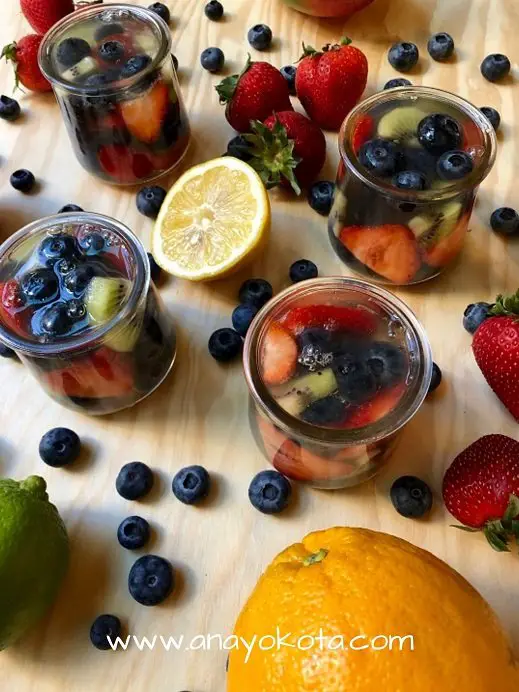
I have created many forms of kanten jelly from adult alcoholic versions (e.g. strawberry mint mojito kanten) to kid friendly variations (e.g.: red bean paste with strawberries and milk). If you would like more kanten recipes, leave a comment below!
Did you make this recipe or are you looking for other Ana Yokota culinary inspiration? Host a party and wow your guests with an epic charcuterie table or enjoy a fun evening with your family as you make Yubuchobap together.
Learning about the Japanese culture is so beautiful to me. I am honored that I am married to a wonderful Japanese American man who loves when I am curious about how to say things in Japanese.
Have you ever wondered how long it really takes to learn Japanese?
I talk about it in my article about How Long Does It Take To Learn Japanese. From cooking to learning about other Asian cultures, what else would you like me to write? Please share your thoughts in the comment section below.


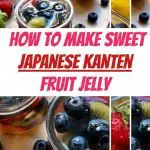




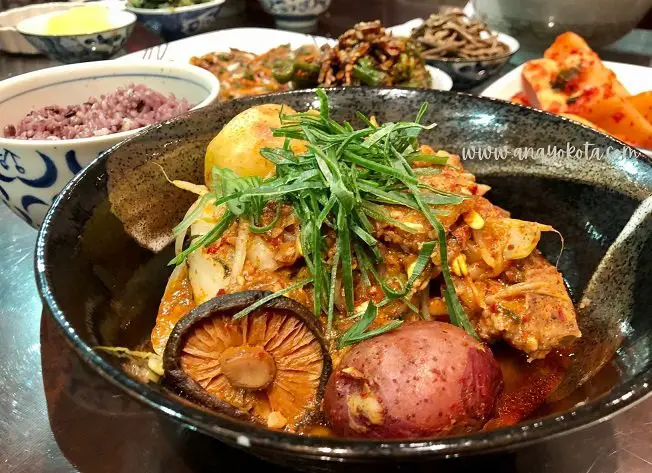
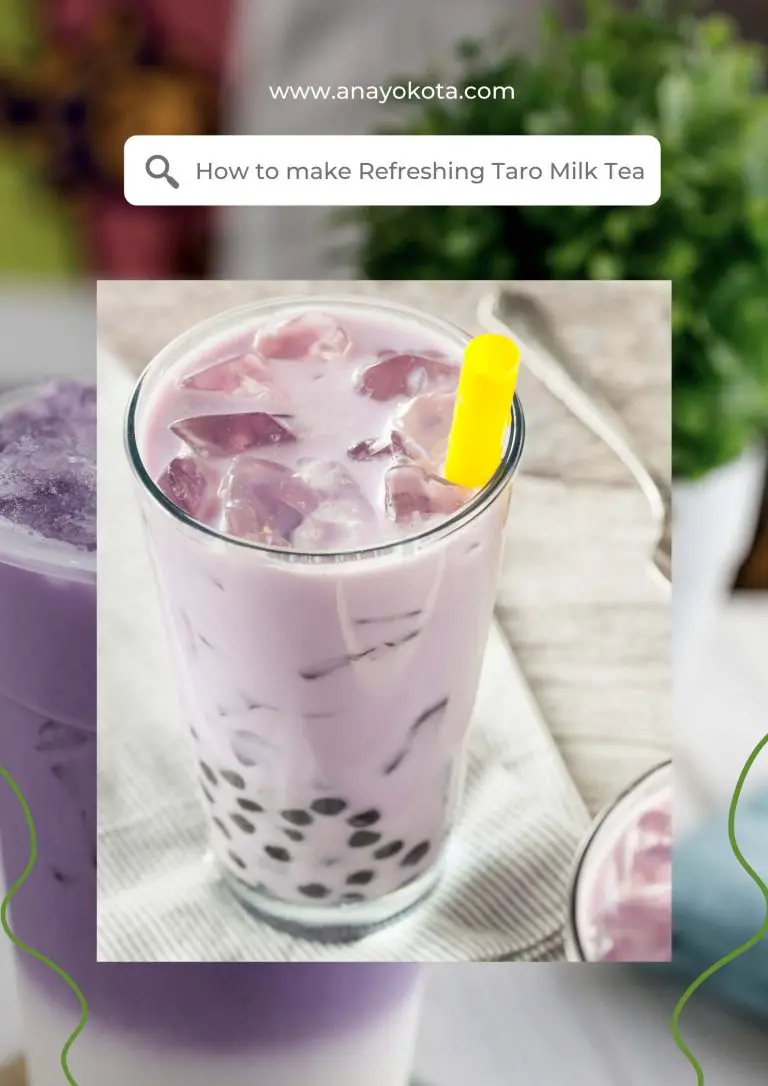
Ana,
I was recently in Shibuya and had the most wonderful sweet potato pudding (Im calling it this) that was not overly sweet and had a very creamy texture. I had communication issues with the wonderful Chef whom said their was no egg in the mixture – just sweet potato and Kanten or agar agar. Have you ever made or had this? The pudding stood up on its own and was very very good. Any help appreciated.
Hi Greg, there are lots of Japanese desserts that do not require eggs. It may, however, have had other forms of dairy such as cream or milk to give it that pudding like creaminess. Kanten (agar agar) is a wonderful ingredient that allows liquids to coagulate (much like gelatin). Hope this helps! 🙂